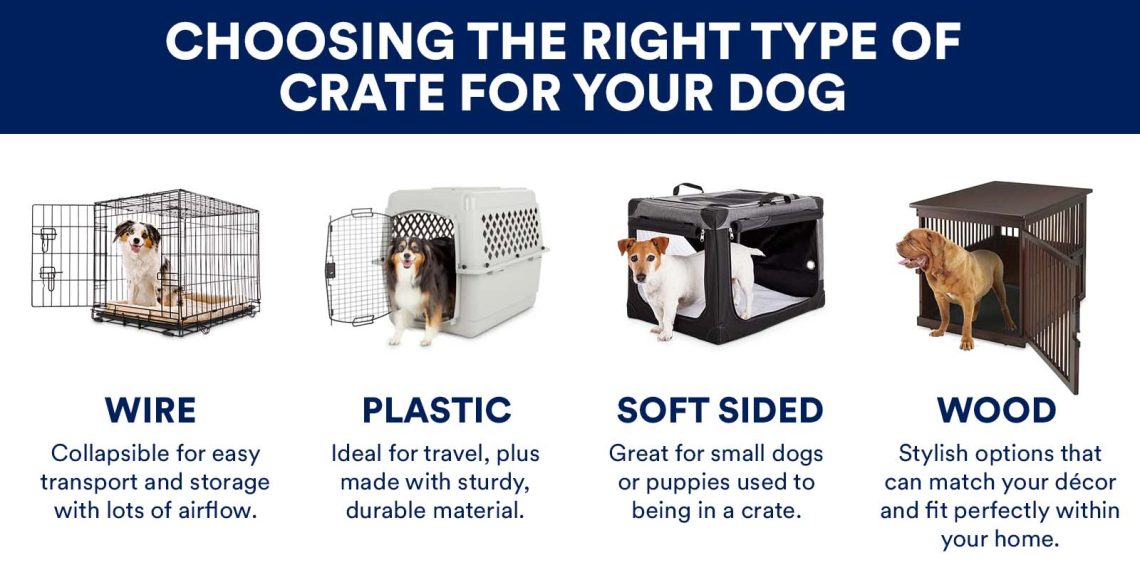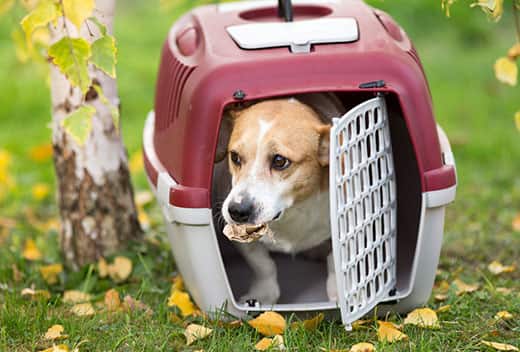
How to choose a cage for a dog
Choosing the right dog crate can seem like a simple question with a simple answer. However, the type of shelter for a pet depends on several factors, including the purpose of the cage, the age of the dog and its size.
Contents
Types of dog cages by type of use
 The size of the cage largely depends on what it will be used for, such as travel or overexposure. Below are recommendations for choosing a cage for any occasion:
The size of the cage largely depends on what it will be used for, such as travel or overexposure. Below are recommendations for choosing a cage for any occasion:
- Toilet training. If you want to accustom a pet to cleanliness in the house, the cage should be spacious enough. The pet must stand up in it, sit down and turn around without hitting the sides of the grate. But at the same time, it should be small enough so that if the dog does his business in the cage, he will dirty his sleeping place, experts at the Labrador Training HQ training center say. The natural instinct of dogs does not allow them to go to the toilet next to the place to sleep. Accordingly, this will help the four-legged friend understand that if he wants to use the toilet, he needs to do it outside.
- Air travel. Airlines that allow pets usually have their own cage requirements, according to the International Air Transport Association. It’s worth looking for a crate that meets these needs while still providing enough space for your pet to be comfortable.
- Travelling by car. Traveling by car will be safer for the dog if it is fastened with a seat belt or placed in a cage attached to the seat. The cage should not only be the size of the place in the car where the pet will go, but also be small enough so that the four-legged friend does not shake inside in the event of a collision or a sudden stop. At the same time, it should be spacious enough for the dog to be comfortable.
- Own house. If you plan to keep the dog in a cage while no one is home, you need to choose a spacious cage. In it, the pet should be able to stretch out, stand up and sit down, and one or two toys should also fit in it. It’s important to remember that dogs are den animals that feel safer in tighter spaces, according to Labrador Training HQ. A crate that is too large is likely to cause more anxiety for the pet than a crate that is slightly larger than its own size. If your dog has been trained to keep the house clean, he will need an extra space where he can urinate on an absorbent mat.
Dog cage size: which one to choose
The main factor to consider when choosing a cage is the size of the dog. If possible, it is best to take your pet with you to the store to estimate the size on the spot. But if you have to choose a cage without a four-legged friend, you can use the general size recommendations from Labrador Training HQ.
- Dogs up to 11 kg and up to 50 cm in length: cage length from 45 to 56 cm, or size XS.
- Dogs up to 13,5 kg and up to 56 cm in length: cage length 61 cm, or size S.
- Dogs up to 18 kg and up to 71 cm in length: cage length 76 cm, or size M.
- Dogs up to 32 kg and up to 86 cm in length: cage length 91 cm, or size L.
- Dogs up to 41 kg and up to 102 cm in length: cage length 107 cm, or size XL.
- Dogs weighing 41–68 kg and 117–172 cm in length: cage 122–182 cm long, or XXL.
Cage for a puppy: how to choose
Choosing a cage for puppies can be difficult because the pet is still growing. Three approaches can be used:
- Select a crate based on the puppy’s current size and update the crate to a larger size as the puppy grows. In this case, it is better to start with economical models, and already when the puppy is fully grown, invest in a more expensive cage.
- Use a cat carrier to carry a small puppy until it grows up.
- You can choose a cage for the future, based on the assumption of what size the dog will reach.
Types of cages for dogs: which one to choose
There are several additional factors to consider in order to choose the right accessory.
- A travel cage should have strong walls to make it easier to fix it in the car. It should also be easy to carry from place to place to take the dog to the veterinarian or carry around the airport.
- A solid-walled carrier will make your dog feel more secure because the carrier is more like a den with less light and more privacy. But a similar sense of security can be created for a dog by covering an ordinary barbed cage with a blanket.
- Bar cages are becoming more and more popular because they can be used very versatile. They are foldable so they are easier to stow away or stow in the car. They are also a little easier to clean because they have the sides or roof removed to allow access to the interior.
- Soft cages provide some of the flexibility of wire cages, but are much lighter in weight. However, their biggest drawbacks are that they are easier to damage, less easy to clean, and in a car they don’t provide the same safety as plastic cages.
Consider the possibility of escape. If the dog is excellent at getting out of its cage, you should purchase an accessory with a more secure lock or side walls.
There are many factors to consider when choosing a cage, but doing a little research is a great first step. If in doubt, consult your veterinarian. He will give the right recommendations, taking into account the size and temperament of the pet.





